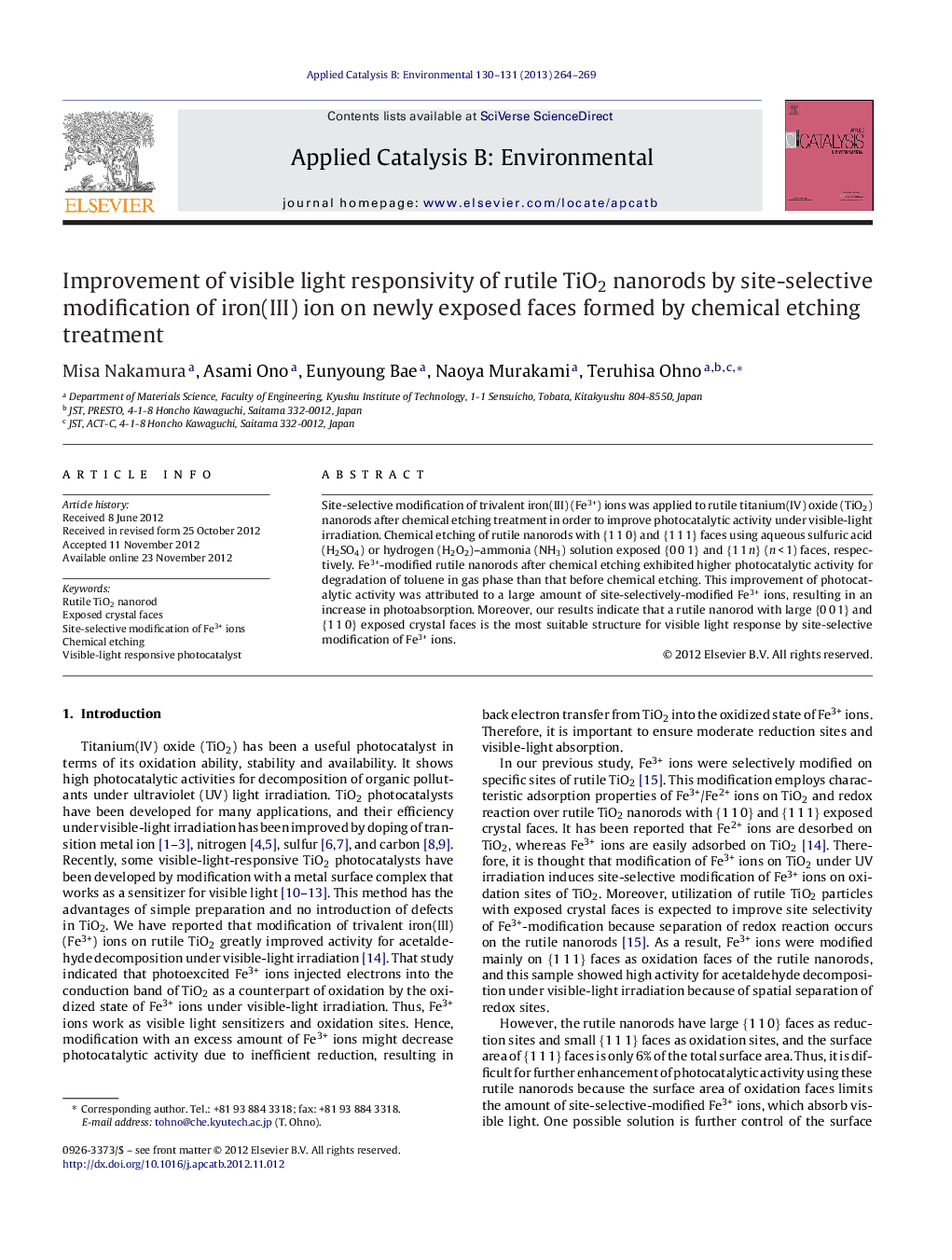| Article ID | Journal | Published Year | Pages | File Type |
|---|---|---|---|---|
| 45837 | Applied Catalysis B: Environmental | 2013 | 6 Pages |
Site-selective modification of trivalent iron(III) (Fe3+) ions was applied to rutile titanium(IV) oxide (TiO2) nanorods after chemical etching treatment in order to improve photocatalytic activity under visible-light irradiation. Chemical etching of rutile nanorods with {1 1 0} and {1 1 1} faces using aqueous sulfuric acid (H2SO4) or hydrogen (H2O2)–ammonia (NH3) solution exposed {0 0 1} and {1 1 n} (n < 1) faces, respectively. Fe3+-modified rutile nanorods after chemical etching exhibited higher photocatalytic activity for degradation of toluene in gas phase than that before chemical etching. This improvement of photocatalytic activity was attributed to a large amount of site-selectively-modified Fe3+ ions, resulting in an increase in photoabsorption. Moreover, our results indicate that a rutile nanorod with large {0 0 1} and {1 1 0} exposed crystal faces is the most suitable structure for visible light response by site-selective modification of Fe3+ ions.
Graphical abstractFigure optionsDownload full-size imageDownload as PowerPoint slideHighlights► Fe3+ were modified on newly exposed {0 0 1} and {1 1 n} (n < 1) as oxidation faces. ► Photocatalytic activity was evaluated by decomposition of toluene under visible light. ► Fe3+-modified rutile nanorods after etching with H2SO4 exhibited superior activity. ► Fe3+-modification on {0 0 1} faces increased in electron injection from Fe3+ into TiO2. ► Activity depended on both surface area of reduction faces and amount of electrons.
